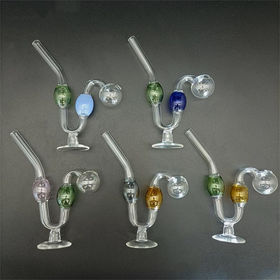Oil burner pipes are an essential component of an oil furnace and must be chosen carefully to ensure optimal performance. Oil burners are efficient and reliable sources of heat, but the wrong type of pipe can cause problems like reduced efficiency, obstruction, or wear and tear. When choosing an oil burner pipe, you should consider the type, size, and material of the pipe, as well as the environmental conditions in your area.
Types of Oil Burner Pipes
oil burner pipe come in two main types: single-wall and double-wall. Single-wall pipes are made of a single sheet of metal and are the most common type of oil burner pipe. They are available in a variety of sizes and materials, including steel, copper, and stainless steel. Single-wall pipes are economical and easy to install, but they are not as durable as double-wall pipes and may corrode over time.
Double-wall pipes consist of two metal sheets, with a layer of insulation between them. This insulation helps to reduce heat loss and can make the pipe more efficient. Double-wall pipes are more expensive than single-wall pipes, but they are more durable and can last much longer.
Size of Oil Burner Pipes
The size of the oil burner pipe you choose will depend on the size of your furnace. The larger the furnace, the larger the pipe you will need. The size of the pipe is usually measured in inches, and you should always use the manufacturer’s recommended size.
When measuring the size of the pipe, it is important to measure the inside diameter of the pipe, not the outside diameter. If the pipe is too small, it may not be able to pass enough oil to the furnace, which can cause the burner to malfunction. If the pipe is too large, it can cause a blockage, which will reduce efficiency.
Material of Oil Burner Pipes
The material of the pipe is another important factor to consider when choosing an oil burner pipe. The material will determine the durability of the pipe and how long it will last. The most common materials are steel, copper, and stainless steel.
Steel pipes are the most economical option and are easy to install, but they are not as durable as other materials. Copper pipes are more durable and resistant to corrosion, but they are more expensive. Stainless steel pipes are the most durable and resistant to corrosion, but they are the most expensive.
Environmental Conditions
The environmental conditions in your area will also affect the type of pipe you choose. If you live in an area with high humidity, you should choose a pipe with a corrosion-resistant coating. This will help protect the pipe from corrosion and wear and tear.
If you live in an area with extreme temperatures, you should choose a pipe with a high temperature rating. This will ensure that the pipe can withstand the extreme temperatures without breaking down.
Conclusion
Choosing the right type and size of oil burner pipe for your home is essential for optimal performance. Consider the type, size, and material of the pipe, as well as the environmental conditions in your area. Steel, copper, and stainless steel pipes are the most common options, and you should always use the manufacturer’s recommended size. With the right pipe, you can ensure that your oil furnace runs at peak efficiency and lasts for many years.
For more information please visit wholesale manufacturers.


